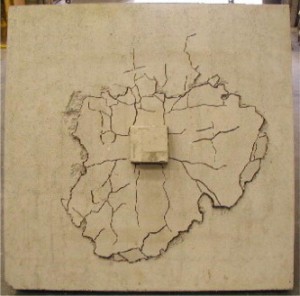There are several factors that come into play when designing an elevated concrete slab. Obviously, the ability to support the design loads comes first, followed by the allowable deflections and long-term serviceability of the slab. However, the factor that most frequently comes up when I’m discussing a slab with an architect is punching shear.

When I mention punching shear, the architect (or customer) usually says “What’s that?” In reinforced concrete, punching shear is the failure mode that occurs when a column “punches through” the slab. It’s a function of column footprint and slab thickness. This is an especially large issue for post-tension slabs, since they tend to be relatively thin and flat for their spans. That’s not to say that conventionally-reinforced slabs don’t have this issue as well, but it comes to light more frequently with prestressed slabs.
As structural engineers, we have several tools available to address this issue. Here’s a brief rundown:
The easiest (but generally not economical) tool is increasing column size and slab thickness. Apart from the obvious drawback of larger members costing more money, a thicker slab weighs considerably more than a thin one — which in turn increases all of the loads that the slab and column carry . . . including punching shear.
Because of the increased load issues, designers frequently use a small thickened area called a “drop cap”. Short for “column CAPital”, this thickened area increases the effective thickness of the slab at the top of the column without increasing the slab weight. Further away from the column, the drop cap increases the footprint that is applied to the slab. There are two main drawbacks to this method: first, forming numerous small drops is labor-intensive, and therefore expensive; second, it’s very difficult to get architects to accept a giant glob of concrete at the top of each column, especially in spaces where headroom is an issue.
To avoid drop caps (but keep the thin slabs) projects frequently use some type of shear reinforcement around columns. While there are mild-reinforcement details that have been created for this application, it’s more frequent to see some type of specialty (proprietary) reinforcement. Examples include Decon® Studrails® and LENTON® Steel Fortress. All of these systems provide steel reinforcement across the shear failure plane, greatly increasing the slab system’s total strength. This behaves very similarly to a drop cap, in that it increases the column’s footprint in contact with the slab. The drawback to these systems is that they are complex, have long lead times, and are very expensive compared to conventional reinforcement.
Every project is different, and, depending on labor and material cost, every one of these solutions may turn out to be the best for you. EVstudio has experience with numerous concrete technologies, and we can help you determine what solution is going to make the most sense for your application.










